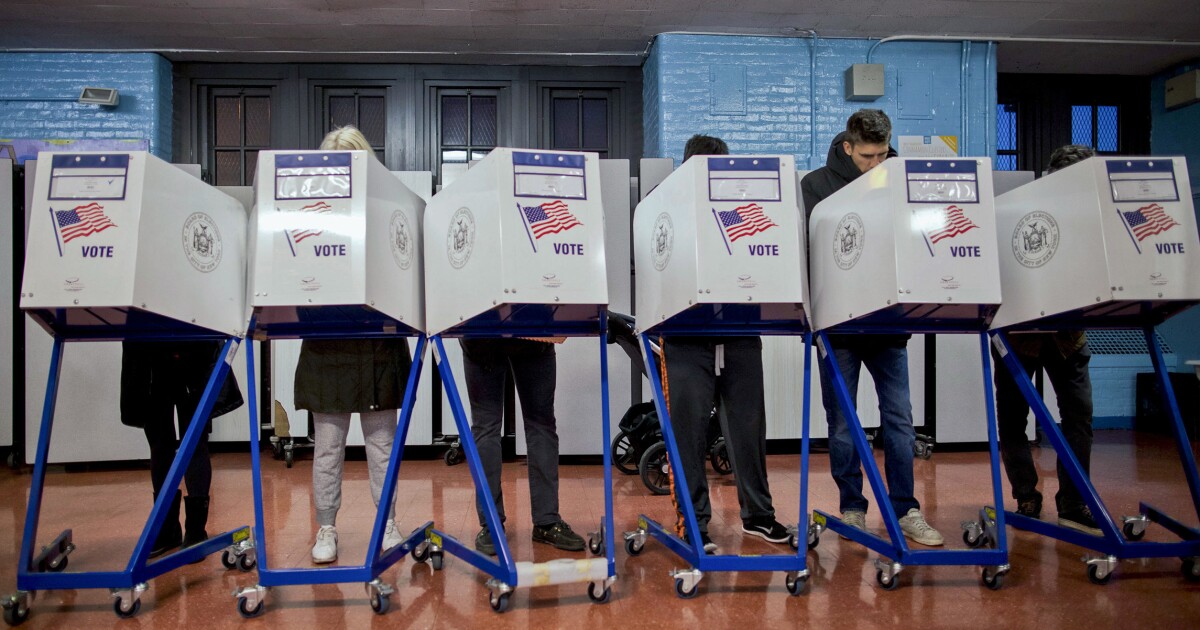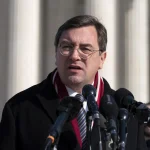

As politicians prepare for the 2024 election season to start next year, campaign vendors and consultants are likely bracing for what could be their most lucrative cycle ever.
That’s because elections have become longer and more expensive affairs over the past several decades.
YEAR IN REVIEW: WHAT REPUBLICANS SHOULD LEARN FROM 2022
The cost of the 2022 midterm election was projected to exceed $16 billion, making it the most expensive midterm cycle in history, according to OpenSecrets.
Two years earlier, the 2020 election took the title of most expensive presidential cycle when political spending topped $14 billion.
And with an unusual number of competitive Senate seats up for election in 2024, along with a House majority so thin that just a handful of races could decide control of the lower chamber, the next election cycle is likely to attract even more money than ever before.
“Aggressive fundraising in early 2021 and competitive Republican primaries contributed to the record-smashing totals we saw earlier this year, but as 2022 wears on we are seeing candidates report more pedestrian hauls,” Sarah Bryner, director of research and strategy for OpenSecrets, said in an analysis of the 2022 spending levels.
Bryner noted that factors like inflation and “donor fatigue” could have caused political donations to dwindle in the back half of the midterm election.
Fierce primaries can indeed drive up the cost of elections earlier in the cycle.
In 2016, the crowded and heavily contested GOP primary helped drive up the overall cost of spending that cycle well above 2012 levels, according to the Federal Election Commission, thanks in part to the sheer volume of candidates involved.
Competitive races in expensive media markets can also ratchet up the cost of elections.
Campaigns themselves get to pay lower rates for broadcast TV ads around elections, but political action committees, which make up an ever-growing share of political spending, can end up paying much higher prices to boost candidates on the airwaves.
In the Nevada Senate race this year, for example, Sen. Catherine Cortez Masto’s (D) campaign paid $21,000 to air an ad during a Las Vegas Raiders football game. A Republican super PAC working to unseat her paid $150,000 to air an ad of the same length during the same game, according to the New York Times.
With Republicans in particular relying more heavily on PACs to deploy ads, the cost of doing business during elections is likely to grow.
This year, a number of House races in New York became competitive and attracted piles of cash from donors and outside groups; Republicans flipped four seats in New York, helping them win control of the House.
The competitive House races in New York cost nearly $80 million between the two parties, according to an analysis from AdImpact. The cost of running ads in the expensive New York City media market, which touches 19 of the state’s congressional districts, helped drive up that figure.
The 2024 cycle is also likely to be longer than any in recent memory.
Former President Donald Trump has already announced his third bid for the White House and filed his papers with the FEC.
His entry into the race just days after the 2022 midterm elections could persuade other Republicans to jump in earlier than they otherwise would, extending the amount of time campaigns will be hitting up donors for cash.
And if President Joe Biden chooses not to seek a second term, that could trigger an even greater avalanche of money.
A primary on the Democratic side would undoubtedly become a costly affair as politicians jockey to take up Biden’s mantle; if Biden chose to run, the money from donors in his party would flow only to him and only for the general election.
The rise of super PACs, which unleashed unlimited donations into the election system in 2010, has pushed the cost of elections into the stratosphere.
CLICK HERE TO READ MORE FROM THE WASHINGTON EXAMINER
In 2012, the first presidential cycle after the Supreme Court case that legalized PACs, both then-President Barack Obama and now-Sen. Mitt Romney (R-UT) raised more than $1 billion between their respective campaigns and PACs. It was the first time any candidate had topped the billion-dollar mark.
Now, that much money has become the standard for presidential campaigns. Hillary Clinton surpassed $1 billion in 2016 and Donald Trump came close.
In 2020, Biden and allied groups raised $1.69 billion, and Trump and allied groups raised an eye-popping $1.96 billion.





